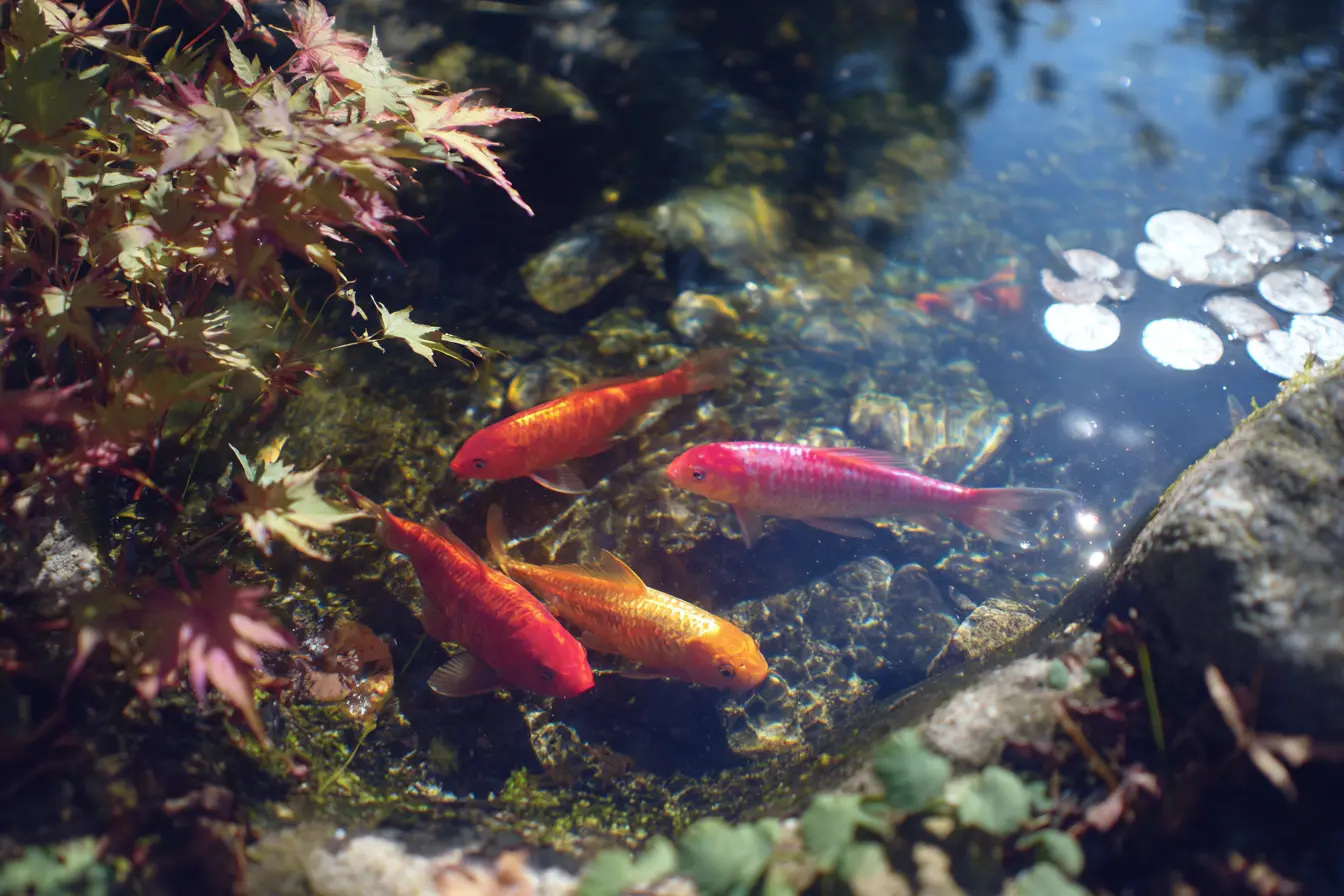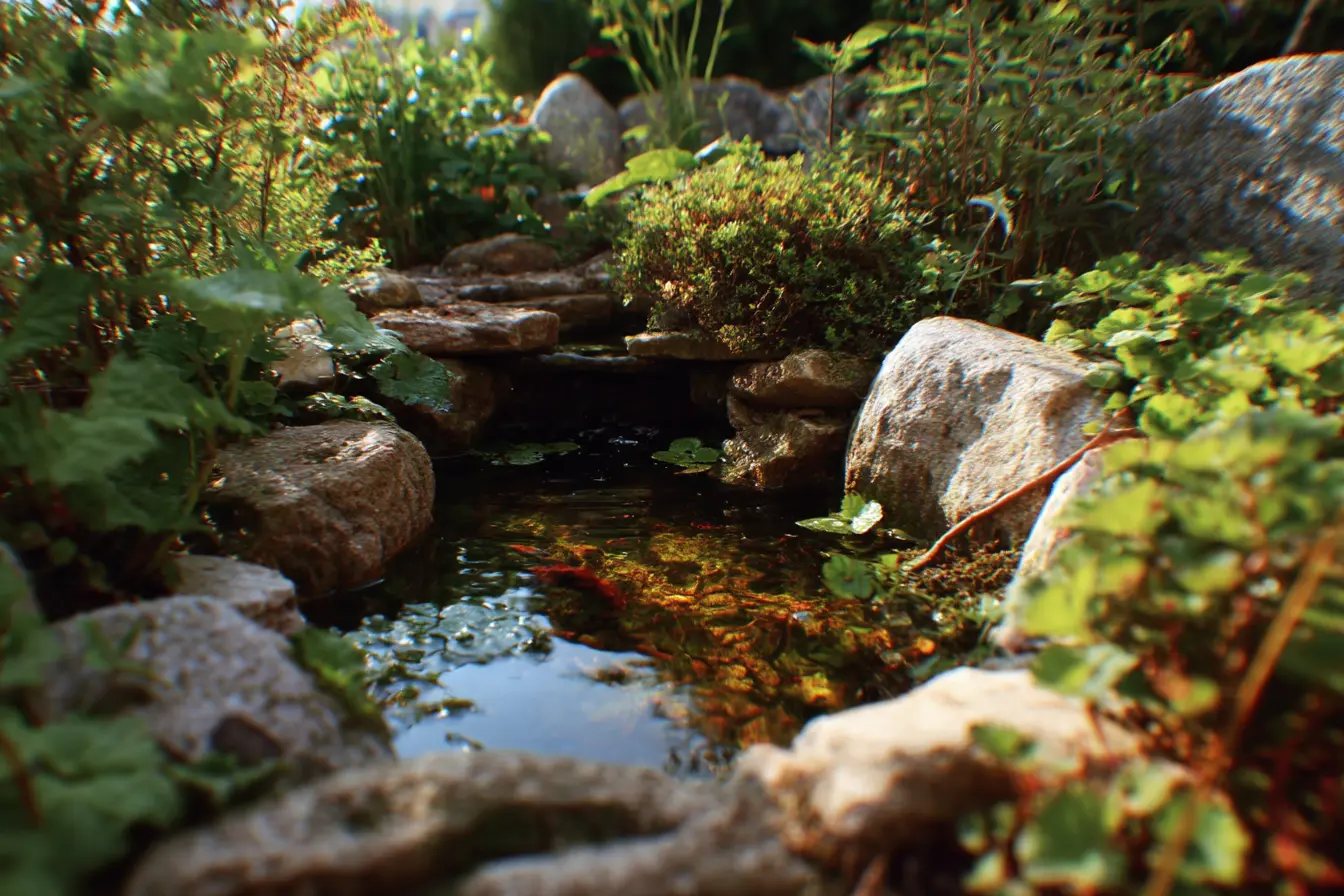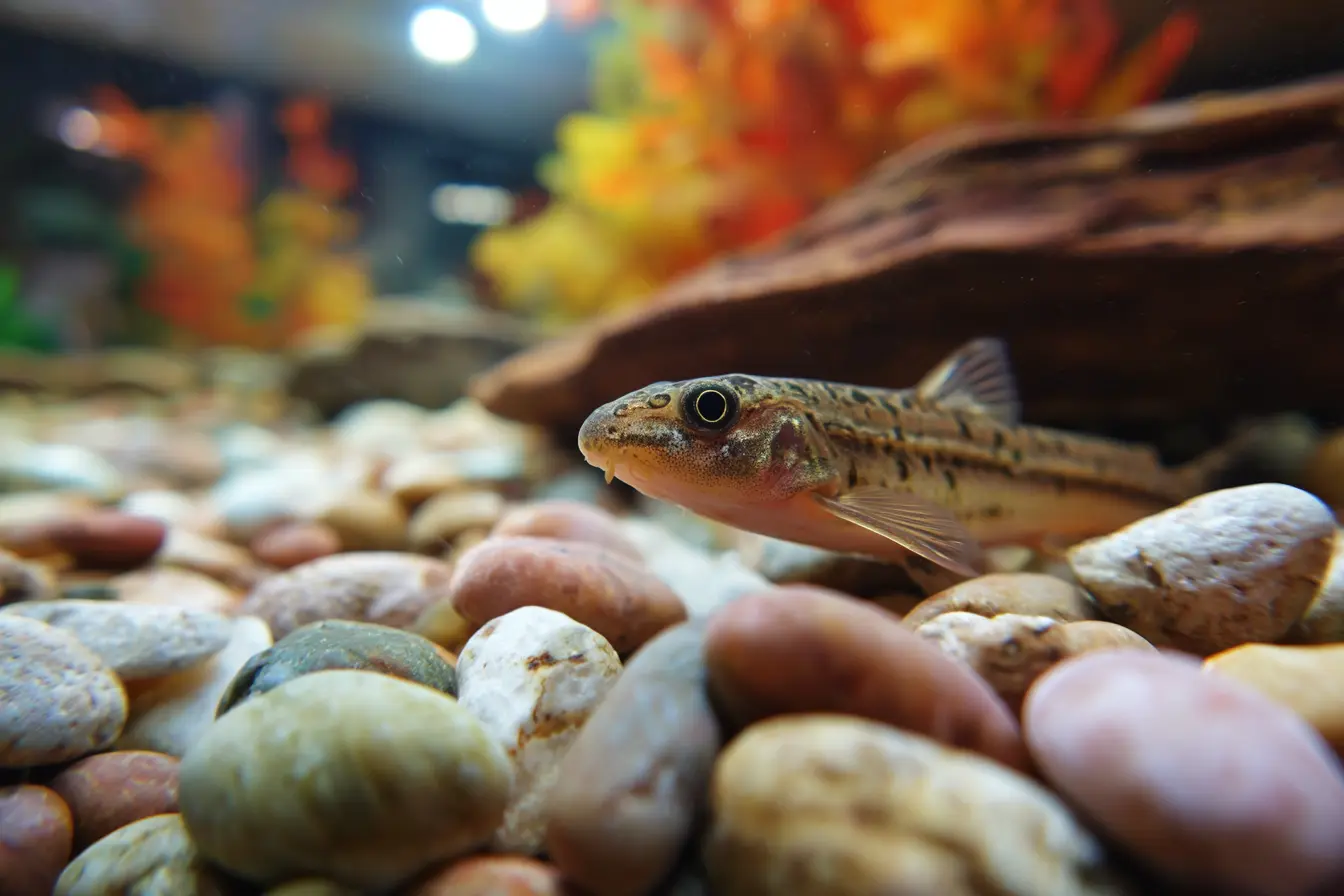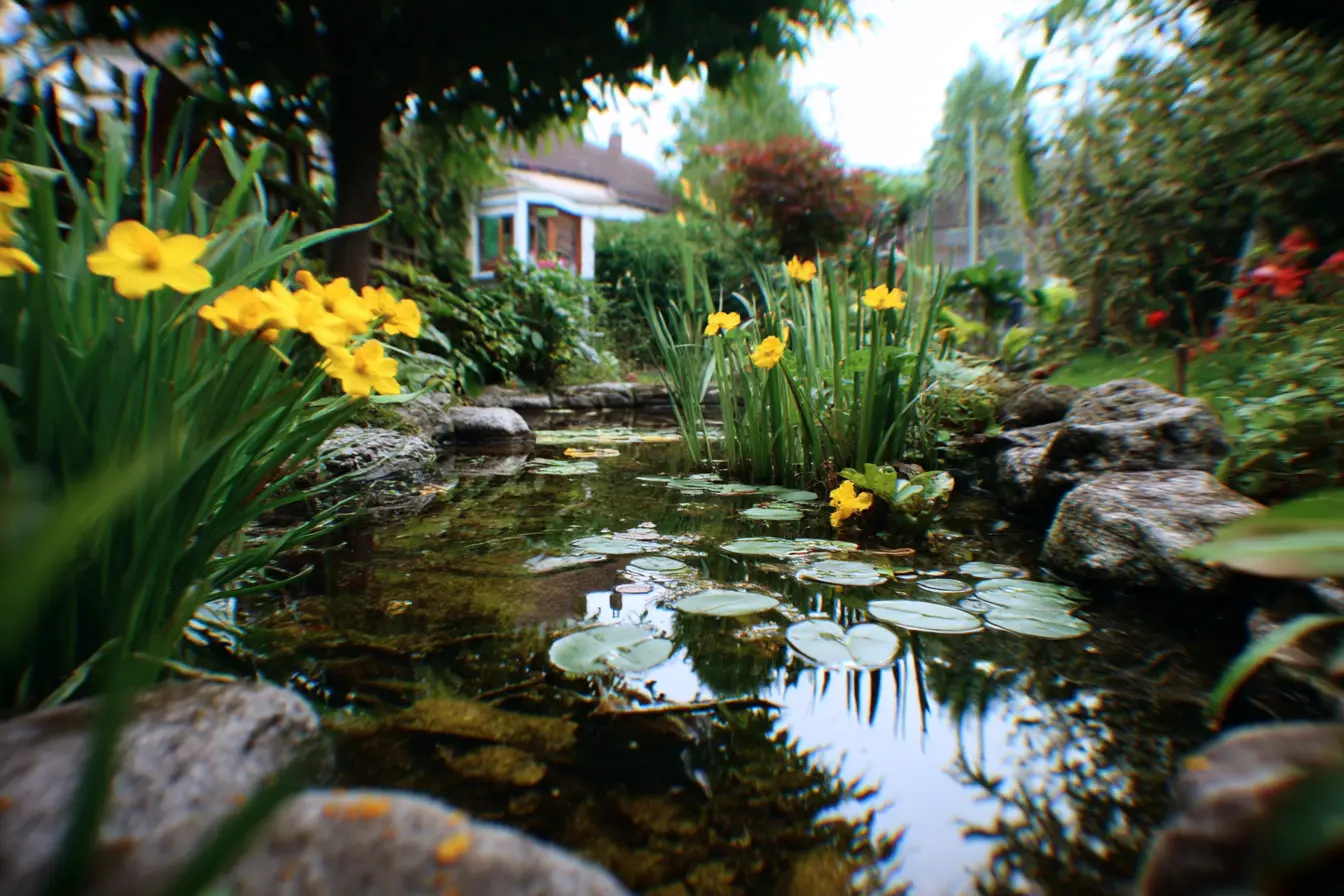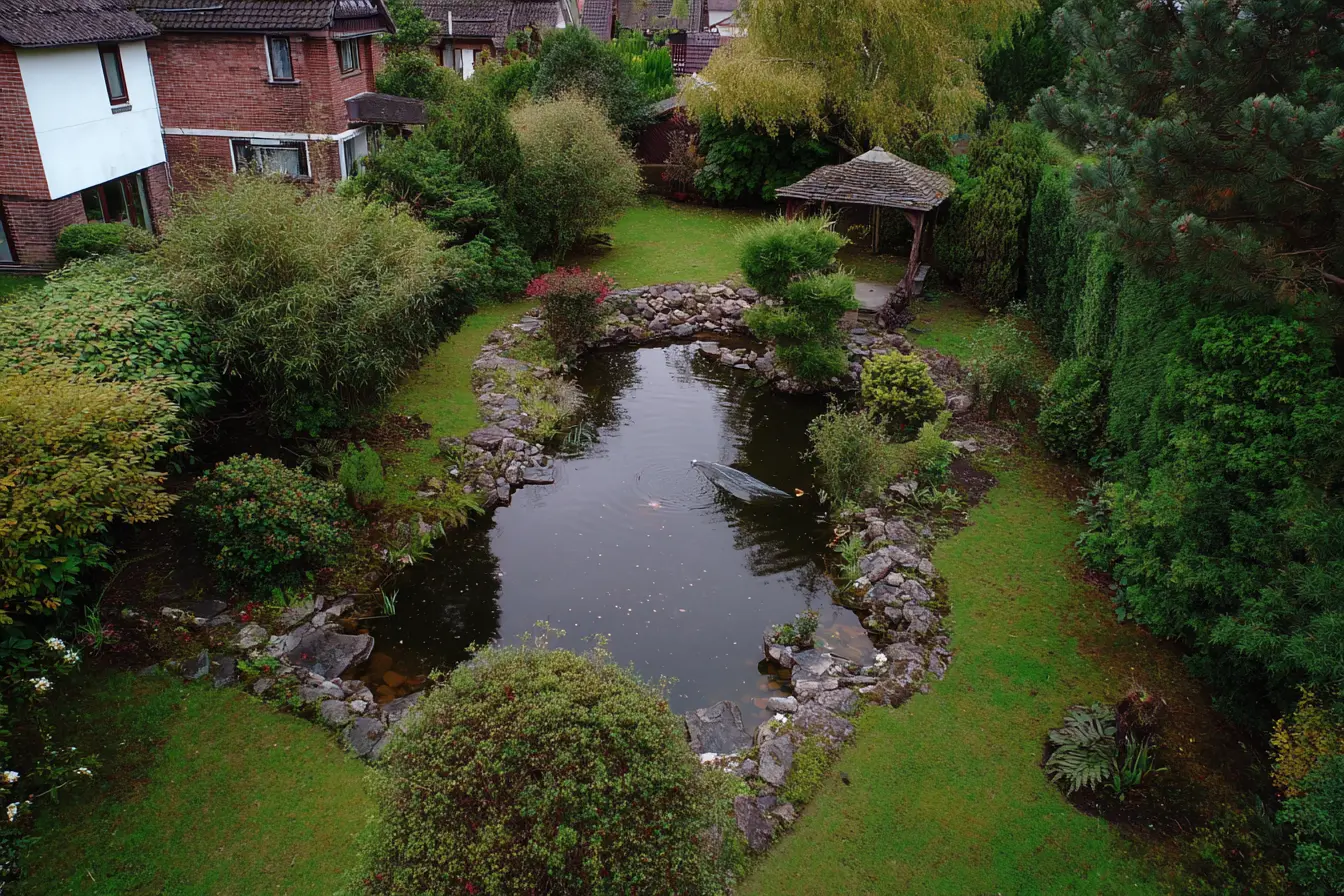
Common Pond Problems and How to Fix Them
Even the best-designed ponds can encounter problems from time to time. Recognising the signs early and knowing how to respond will help maintain a healthy, attractive pond that thrives year-round.
This comprehensive guide covers the most common pond issues, their causes, and the most effective ways to rectify them.
Green Water (Algae Bloom)
Symptoms
- Water turns pea-soup green
- Visibility through the water becomes very poor
Causes
- Excessive nutrients (such as from fish waste or decomposing plants)
- Too much sunlight and too few plants
- Lack of water movement or filtration
Solutions
- Install a UV clarifier: A UV clarifier kills suspended algae particles without harming fish or plants.
- Increase planting: Add floating plants like water lilies to provide shade and outcompete algae for nutrients.
- Reduce feeding: Overfeeding fish leads to more waste; feed smaller amounts only as needed.
- Regular water changes: Replace 10–20% of pond water monthly to dilute nutrient levels.
String Algae (Blanket Weed)
Symptoms
- Long, fibrous strands of algae floating or attached to surfaces
Causes
- Nutrient imbalance
- Excess sunlight
- Lack of pond maintenance
Solutions
- Manual removal: Regularly remove string algae by hand or using a pond rake.
- Install barley straw: Barley straw releases natural compounds that inhibit algae growth as it decomposes.
- Balance planting: Increase the number of aquatic plants to limit nutrients available to algae.
Cloudy or Murky Water
Symptoms
- Water appears grey, brown, or muddy
- Poor visibility
Causes
- Disturbed sediment
- Overstocked or overfed fish
- Insufficient filtration
Solutions
- Enhance filtration: Upgrade or clean your filter system.
- Use a pond vacuum: Remove silt and debris settled at the bottom.
- Plant more marginals: Plants help trap and filter out fine particles.
- Introduce a fine mesh pre-filter: Captures smaller debris before it reaches the main filter.
Low Oxygen Levels
Symptoms
- Fish gasping at the surface
- Lethargic fish
- Foul odours
Causes
- High temperatures (warm water holds less oxygen)
- Overcrowded ponds
- Decaying organic matter consuming oxygen
Solutions
- Add aeration: Use fountains, waterfalls, or dedicated air pumps to boost oxygen levels.
- Remove excess debris: Clear fallen leaves and decomposing material.
- Control stocking levels: Avoid keeping too many fish for the pond size.
Fish Health Issues
Symptoms
- Visible sores, fungus, or parasites
- Lethargy or unusual swimming behaviour
- Loss of appetite
Causes
- Poor water quality
- Stress from overcrowding
- Introduction of diseases via new fish
Solutions
- Regularly test water: Monitor pH, ammonia, nitrites, and nitrates.
- Quarantine new fish: Before adding to the pond, keep new arrivals isolated to monitor for illness.
- Treat with appropriate medication: Only after correctly diagnosing the problem.
Pond Leaks
Symptoms
- Water level dropping faster than normal evaporation
- Wet patches around the pond area
Causes
- Damage to liner (tears, punctures)
- Cracks in preformed pond shells
- Faulty pipework or fittings
Solutions
- Locate the leak: Check the pond edge first; common causes are liner folds or damage.
- Repair the liner: Use a pond liner repair kit specifically designed for your material.
- Fix or replace fittings: Check pipework for leaks and tighten or replace as necessary.
Excessive Plant Growth
Symptoms
- Overcrowded surface and margins
- Oxygen drop at night due to plant respiration
Causes
- Lack of regular pruning
- Nutrient-rich water
Solutions
- Thin out plants: Remove excess growth, particularly invasive species.
- Divide and repot plants: Helps to keep them manageable and healthy.
- Limit fertiliser use: Avoid using lawn or garden fertilisers near your pond.
Bad Smells
Symptoms
- Rotten egg or sulphurous odours
- Visible decay in water
Causes
- Buildup of decomposing organic matter
- Anaerobic (oxygen-free) zones in sludge
Solutions
- Remove sludge: Use a pond vacuum or manually scoop out thick deposits.
- Improve circulation: Add pumps or waterfalls to keep water moving.
- Regular skimming: Remove leaves and debris before they sink and decay.
Tips for Preventing Pond Problems
- Test water quality regularly and take prompt corrective actions.
- Add a mixture of submerged, floating, and marginal plants for natural balance.
- Maintain pumps, filters, and UV clarifiers on a monthly schedule.
- Feed fish appropriately and avoid overstocking.
- Carry out seasonal maintenance tasks to prepare for changes in weather.
- Remove debris such as fallen leaves before they settle.
- Perform partial water changes to refresh the ecosystem without shocking it.
Conclusion
A healthy pond is the result of consistent observation, prompt problem-solving, and good seasonal care. By understanding common pond issues and their solutions, you can enjoy a clear, vibrant, and thriving pond all year round.
With a little regular effort, your pond will continue to be a beautiful focal point in your garden and a welcoming habitat for a variety of wildlife.
Related Vets
Vets near you
Speciality vets
- Aquatics vet specialists
- Birds vet specialists
- Camelids vet specialists
- Cats vet specialists
- Cattle vet specialists
- Deer vet specialists
- Dogs vet specialists
- Equines vet specialists
- Exotic vet specialists
- Goats vet specialists
- Pigs vet specialists
- Poultry vet specialists
- Sheep vet specialists
- Small Mammals vet specialists
- Wild vet specialists
